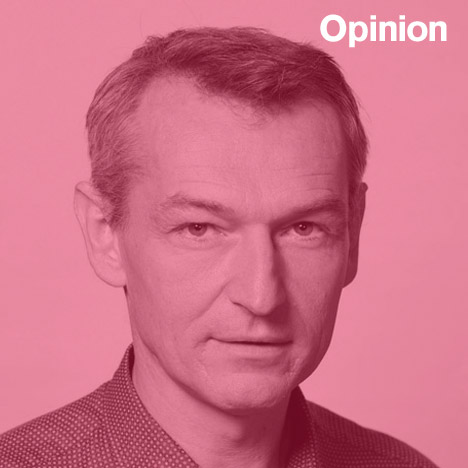
"It's only a matter of time before the design bubble bursts"
Opinion: in this week's Opinion column, Lucas Verweij argues that as the design field expands to encompass all creative activities and designers try to solve all the world's problems, the discipline cannot possibly live up to expectations.
Design can no longer keep up with the promises it makes. Twenty-five years ago, nobody knew what design was or what purpose it served. The word was scarcely used on the European mainland, because back then we referred to the profession as vormgeving, which literally means "form-giving". The word "design" appears nowhere on the diploma I received when I graduated, but the same school I graduated from is now called the Design Academy.
The word "design" previously denoted a position on style. Alessi produced "design" coffee pots and Dieter Rams created "designed" electrical appliances for Braun. The term was reserved for intensive and often Modernist-looking products that you bought in museum shops. Back then design was still an adjective, not a verb.
In the Anglo-Saxon world, by contrast, design was a container term for all sorts of creative disciplines. That definition has since gained in popularity and all creative professions are now grouped under the umbrella of design. Everything has become design, and design is everywhere.
Apart from that semantic victory, the popularity of the profession is such that it is now absorbing and assimilating other professions. No longer is its scope confined to interior, graphic or product design. Now it also encompasses social, interaction and food design. Then we have design thinking and service design, the end products of which can be a service, a mentality or a procedure. That widens the scope of design further to include process, distribution, retail and organisation. Nothing remains untouched. Discussions within the profession suddenly emphasise similarities more than differences, but up until a short time ago we could not agree on what was and was not designed.
Once a patchwork of disciplines, the professional field has been transformed into one vast and pleasant entity. Things will remain like that as long as design is doing well, which is precisely the case now. Books and magazines on design sell well. Most design products and services also sell well, and the economic crisis hit the design sector substantially less than the architecture sector.
Design is expanding into the field of innovative techniques and methods for production, and it is exploring new ways of working and insights. Design is closely connected to the growing internet economy. The startup scene maintains close links with the design world and forms part of it through interface and interaction design. Design is closely connected to the changing world and now finds itself right at the heart of it.
In addition, the public puts a lot of faith in designers, comparable to the faith once accorded to architects. In the past, architects were seen as people who could solve problems; they were creative and progressive visionaries and set the tone in questions of taste. Architecture shaped the post-war discourse. Architects provided the forms that expressed how power was distributed, how life was lived and how society was organized.
A comparison with design obviously presents itself. Many social questions are now asked of design and many tools of individualisation and globalisation now fall within the design domain. That is why many positive connotations about architecture have now transferred to design. Designers are now the ones who can solve problems, who can be visionary and creative, who take the lead in matters of taste.
An important cornerstone of design is creativity. Never before has creativity been such a positively charged term. When I was young it was considered nice if someone was creative, but nothing more than that. Creativity was not in itself a positive quality. For what purpose could it serve in an era that placed much more emphasis on efficiency, organisation and quantity than on quality, creation and recreation?
The very opposite is now the case. We think that problems cannot be solved without creative input. Creativity and innovation are the new key concepts for growth. In Europe, innovation receives a lot of subsidy because it is thought that our creative and innovative powers are our only genuinely distinctive qualities in a global economy. China can produce more cheaply, India can engineer more cheaply, but for the time being our creativity is irreplaceable. All hope is suddenly put on a quality that was previously deemed superfluous.
I think that expectations and promises are now far too unrealistic when it comes to design. Practically all design disciplines are unprotected professions. People are free to call themselves "design thinkers" or "social designers" whenever they want. Every year there are three new educational programmes starting. Design is growing in such an unbridled manner that the quality can no longer be guaranteed.
Meanwhile the expectations and the promises keep on growing: design can solve the smog problem in Beijing, the landmine problems in Afghanistan and huge social problems in poor parts of Western cities. The ever-growing expectations of design can no longer be met. We are in a design bubble; it's a matter of time before it will burst.
Lucas Verweij is a Berlin-based writer, curator and initiator in the field of design. He is a guest professor of product design at Kunsthochschule Weißensee in Berlin and co-initiator of the Pruys-Bekaert Programme for design critical writing. He blogs under the name Lucas_Berlin.